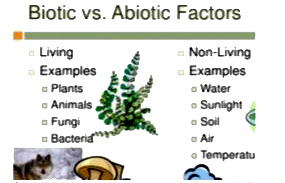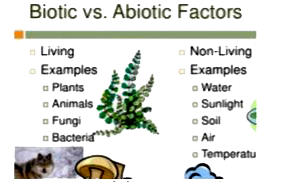The interaction of living organisms with the non-living environment constitutes the ecosystem.
Step-by-Step Solution:
1. Understanding the Ecosystem:
- An ecosystem is a community of living organisms (plants, animals, microorganisms) interacting with each other and with their non-living environment (air, water, soil, sunlight).
2. Components of an Ecosystem:
- The ecosystem consists of two main components:
- Biotic Components: These are the living parts of the ecosystem, such as animals, plants, and microorganisms.
- Abiotic Components: These are the non-living parts of the ecosystem, including elements like water, air, minerals, and climate.
3. Interaction Between Living and Non-Living:
- Living organisms depend on non-living components for survival. For example, plants need sunlight and water to grow, while animals need food, which comes from plants or other animals.
- Non-living components also influence the living organisms. For instance, temperature and weather conditions can affect the types of plants and animals that can thrive in a particular area.
4. Conclusion:
- The interaction between living organisms and their non-living environment is essential for the functioning of the ecosystem. This interaction helps maintain balance and supports life. Therefore, the statement that "the interaction of living organisms with the non-living environment constitutes the ecosystem" is true.
- An ecosystem is a community of living organisms (plants, animals, microorganisms) interacting with each other and with their non-living environment (air, water, soil, sunlight).
- The ecosystem consists of two main components:
- Biotic Components: These are the living parts of the ecosystem, such as animals, plants, and microorganisms.
- Abiotic Components: These are the non-living parts of the ecosystem, including elements like water, air, minerals, and climate.
- Living organisms depend on non-living components for survival. For example, plants need sunlight and water to grow, while animals need food, which comes from plants or other animals.
- Non-living components also influence the living organisms. For instance, temperature and weather conditions can affect the types of plants and animals that can thrive in a particular area.
- The interaction between living organisms and their non-living environment is essential for the functioning of the ecosystem. This interaction helps maintain balance and supports life. Therefore, the statement that "the interaction of living organisms with the non-living environment constitutes the ecosystem" is true.
Topper's Solved these Questions
- BOOK - BETOPPERSCHAPTER - OUR ENVIRONMENTEXERCISE - SUMMATIVE WORKSHEET (GIVE THE DIFFRENCES BETWEEN THE FOLLOWING:)5videos
OUR ENVIRONMENT
- BOOK - BETOPPERSCHAPTER - OUR ENVIRONMENTEXERCISE - SUMMATIVE WORKSHEET (DEFINE THE FOLLOWING TERMS:)8videos
OUR ENVIRONMENT
- BOOK - BETOPPERSCHAPTER - OUR ENVIRONMENTEXERCISE - SUMMATIVE WORKSHEET (FILL IN THE BLANKS)11videos
OUR ENVIRONMENT
- BOOK - BETOPPERSCHAPTER - LIFE ON EARTHEXERCISE - SUMMATIVE WORKSHEET5videos
LIFE ON EARTH
- BOOK - BETOPPERSCHAPTER - SOILEXERCISE - SUMMATIVE WORKSHEET14videos
SOIL
Similar Questions
[A] : Ecology is the study of interrelationship between living organisms and their non-living environment .
[R] : The biotic community and non-living environment of an area function together to form an ecosystem .View SolutionName the different kinds of living organisms which exist in our environment.
View Solution
Knowledge Check
- Question 1 - Select One
On earth all living organisms constitute:
ACommunityBBiomeCAssociationDBiosphere - Question 2 - Select One
The study of interaction between living organisms and environment is called
AEcosystemBPhytologyCPhytogeographyDEcology - Question 3 - Select One
All the living organisms and non-living factors of the earth constitute
ABiosphereBCommunityCBiomeDAssociation.
Biosphere is a global ecosystem composed of living organisms and abiotic factors from which they derive energy and nutrients. And ecosystem is defined as structural and functional unit of the biosphere comprising of living and non-living environment that interact by means of food chains and chemical cycles resulting in energy flow, biotic diversity and material cycling to form a stable, self-supporting system

Which of the following group of organisms are not included in ecological food chain?View SolutionBiosphere is a global ecosystem composed of living organisms and abiotic factors from which they derive energy and nutrients. And ecosystem is defined as structural and functional unit of the biosphere comprising of living and non-living environment that interact by means of food chains and chemical cycles resulting in energy flow, biotic diversity and material cycling to form a stable, self-supporting system

The given figure best represents:
 View Solution
View SolutionThe study of interrelationship between living organisms and their environment is called
View SolutionStudy of inter relationship between living organism and their environment is called
View SolutionAll living organisms on or around the Earth constitute:
View Solution

